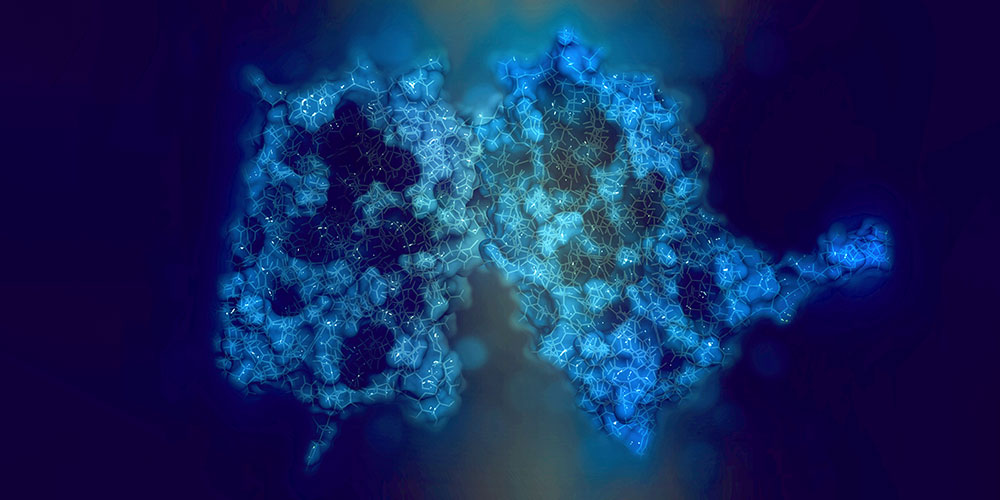3D Structure of a Protein Complex Important for Immune Response
Our innate immune system rapidly eliminates invading pathogens. When a pathogen is detected in the body, the “inflammasome” protein complex initiates the defense response of the immune cells. By combining two high-resolution methods, researchers from the University of Basel’s Biozentrum have now determined the atomic structure of an important part of the inflammasome. The study, recently published in the scientific journal “PNAS”, provides new insights into the mode of action of the protein complex.
14 October 2015
The innate immune system provides the first line of defense against undesired invaders. Its weapons include phagocytes, so-called macrophages, which recognize pathogens through specific receptors and subsequently initiate a defense program. The inflammasomes play a key role in this process. These protein complexes induce an inflammatory response that leads to the death of the infected cells, thus limiting the spread of the pathogen. The researchers working with Prof. Sebastian Hiller at the Biozentrum of the University of Basel combined two classical methods of structure analysis to gain new insights into the inflammasome complex.
Protein forms long filaments in the cell
In the macrophages, the inflammasome plays the role of a mediator. When the cell receptors detect molecules of pathogenic origin, cellular proteins are recruited to form the inflammasome complex. An important adaptor in this complex is the small protein ASC, which is recruited by the receptors, and which consists of two distinct parts. While one part of the ASC protein forms a long filament, the other protein domain activates inflammatory enzymes, the caspases. These are crucial for a successful immune defense against infections.
Structure determination by combining techniques
The 3D structure of the ASC protein filament has so far been modeled by using cryo-electron microscopy data exclusively. “In order to elucidate both atomic structure and dynamics of the ASC protein filament we have applied a new approach,” explains Hiller. “By combining cryo-electron microscopy – which was carried out at the C-CINA facility – with NMR spectroscopy data, we obtained complementary information towards an improved picture of the protein filament. The integrative approach thus enabled us to describe the transition from the soluble to the filamentous form at the atomic level,” says Hiller.
Long protein filaments may amplify signals
So far, little is known about the molecular assembly of the ASC-complex. “Our experiments on macrophages show that ASC-proteins form the filament structure via helical stacking,” says Prof. Petr Broz, co-author of the study. “We assume that the long filaments amplify signal transduction in the cell. As the protein segments that activate caspases protrude from the surface of the ASC protein filament, it can simultaneously activate many caspases, which ultimately drive the inflammatory process. We are currently investigating how exactly this happens.”
A detailed knowledge of the inflammasome assembly is important for a better understanding of auto-inflammatory disorders, which are caused by an overreaction of the innate immune system.
Original source
Lorenzo Sborgi, Francesco Ravotti, Venkata P. Dandey, Mathias S. Dick, Adam Mazur, Sina Reckel, Mohamed Chami, Sebastian Scherer, Matthias Huber, Anja Böckmann, Edward H. Egelman, Henning Stahlberg, Petr Broz, Beat H. Meier, and Sebastian Hiller
Structure and assembly of the mouse ASC inflammasome by combined NMR spectroscopy and cryo-electron microscopy
PNAS (2015), doi: 10.1073/pnas.1507579112
Further information
Prof. Sebastian Hiller, University of Basel, Biozentrum, tel. +41 61 267 20 82, email: sebastian.hiller@unibas.ch

